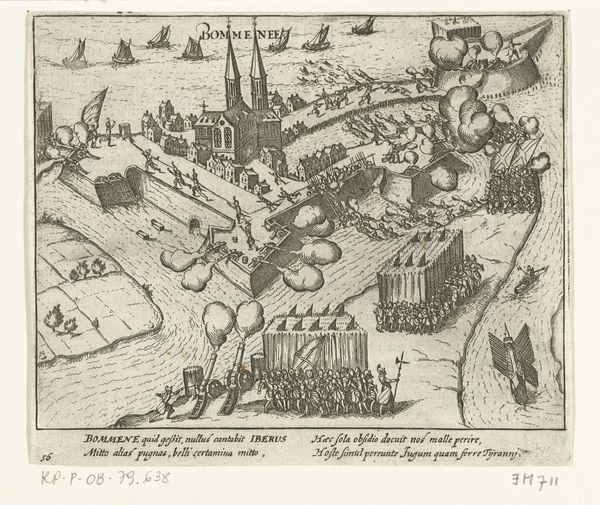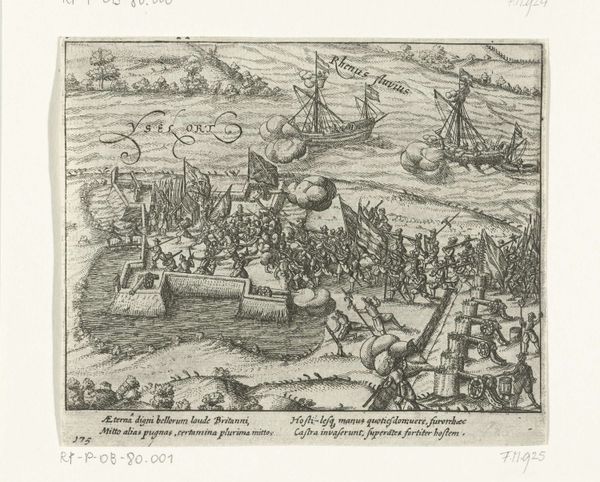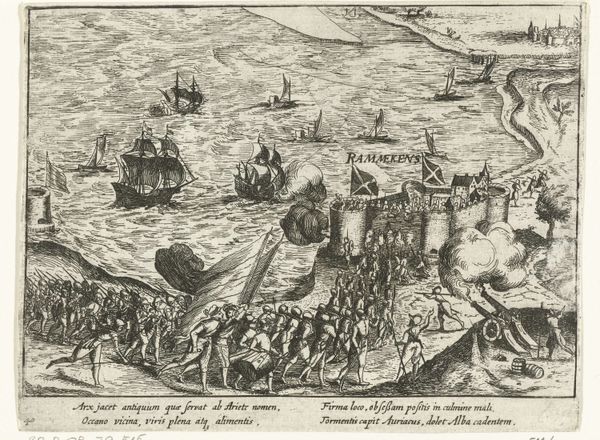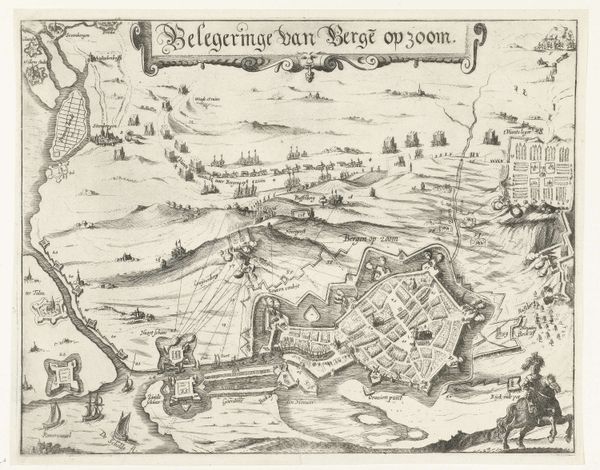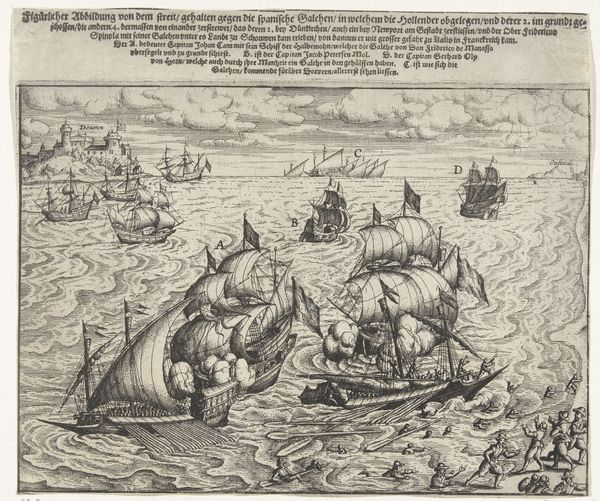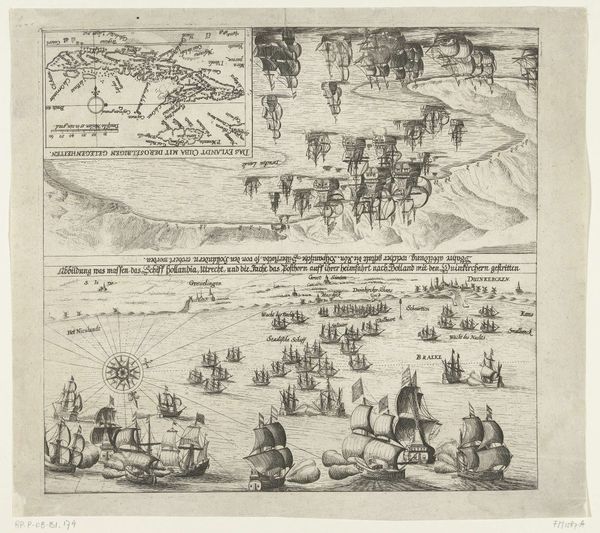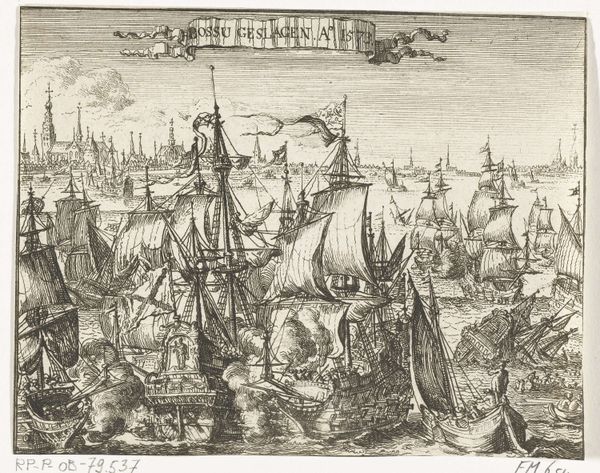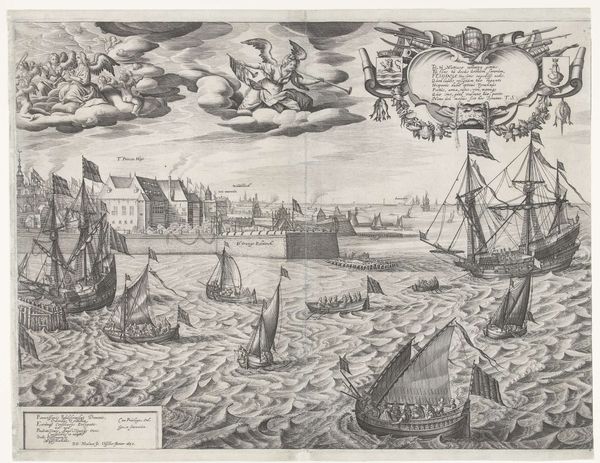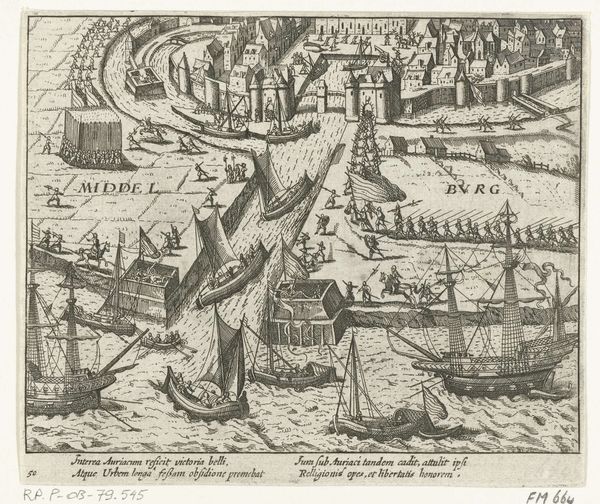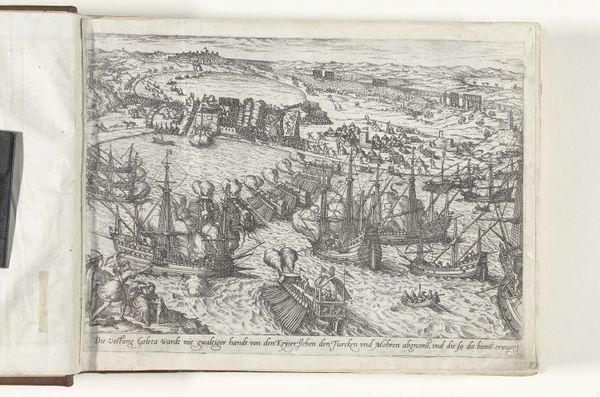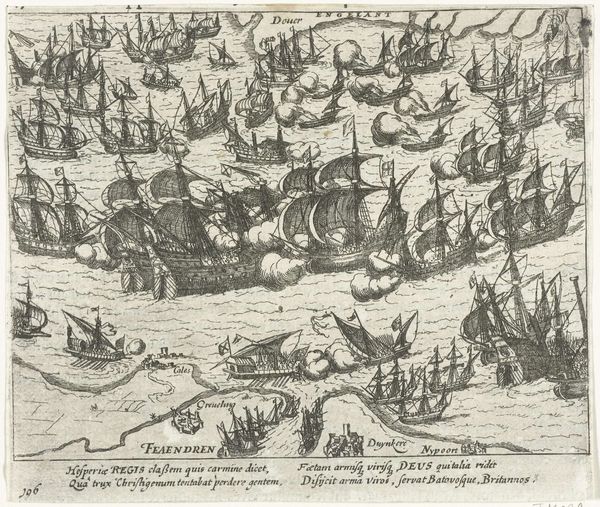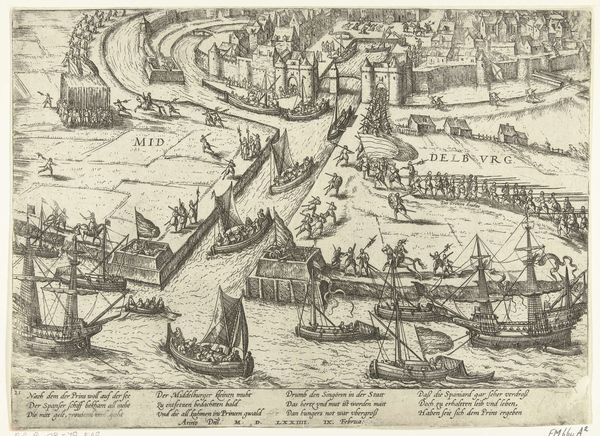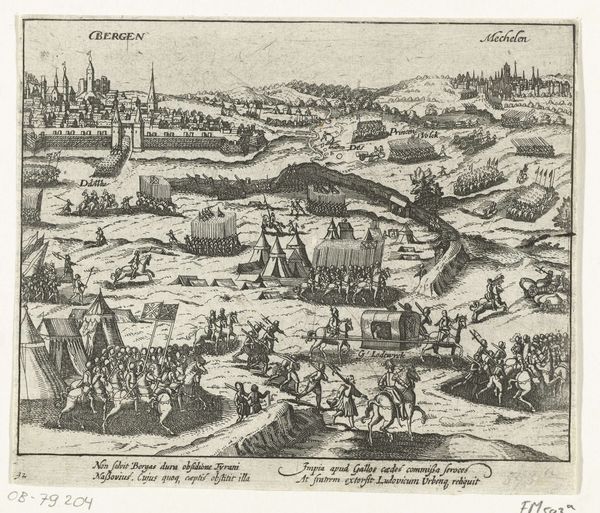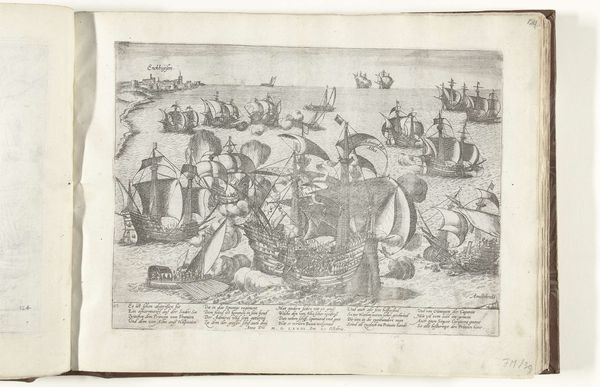
print, engraving
pen drawing
landscape
geometric
line
cityscape
history-painting
engraving
Dimensions: height 146 mm, width 166 mm
Copyright: Rijks Museum: Open Domain
Editor: So, this is a print titled "Inname van Krimpen, 1576," though it was created later, around 1613-1615, by an anonymous artist. It's currently housed in the Rijksmuseum. The scene is incredibly busy, full of ships and tiny figures engaged in what appears to be a naval battle. It feels almost like a news report, depicting a historical event. How do you interpret this work? Curator: It's fascinating how these early prints served as a form of public record and even propaganda. This piece captures the "taking" or "capture" of Krimpen in 1576. Consider that prints like these were relatively affordable and reproducible. How do you think that accessibility affected the public perception of these events during the Dutch Revolt? Editor: Well, I imagine it brought these battles directly to the people, shaping their understanding of the conflict. It makes the Prince of Orange appear as a hero liberating towns from the Spanish. Almost like curated news? Curator: Exactly! It highlights the agency of art in constructing narratives and national identity. Notice the visual emphasis given to the Prince’s forces versus the relatively minimized presence of the Spanish. Who controls the narrative, and therefore the imagery? This print clearly demonstrates that visual storytelling. What is being excluded from this history? Editor: I hadn't thought of it that way. It’s really interesting to see how something that looks straightforward is actually layered with meaning and agendas. Now I'm wondering, what other biases are baked into this image, telling of this historic clash. Curator: This makes one ponder on which choices are influencing historical representation. This is definitely a key role art plays to communicate, persuade, or immortalize its era. Editor: Absolutely! Thinking about it in those terms completely changes how I view historical artworks. Curator: Indeed, it's less about historical accuracy, and more about the socio-political messaging being disseminated at a particular moment in time.
Comments
No comments
Be the first to comment and join the conversation on the ultimate creative platform.
